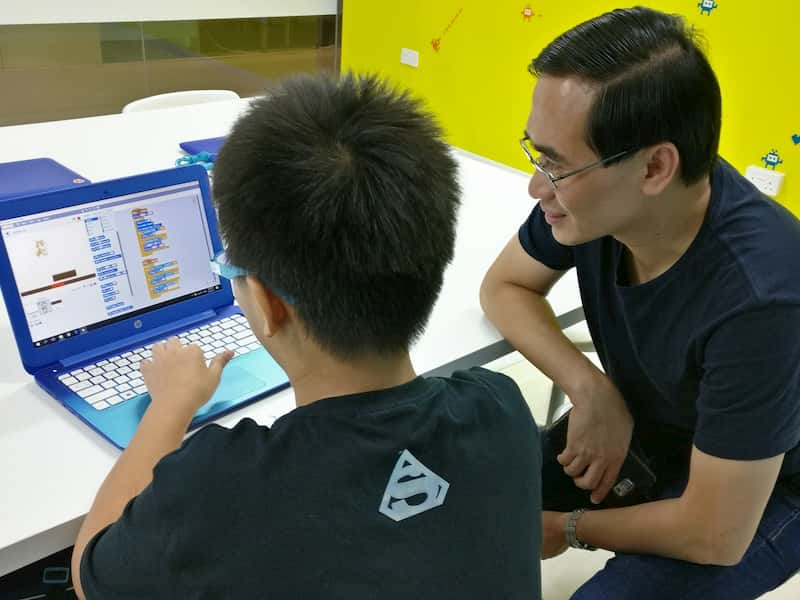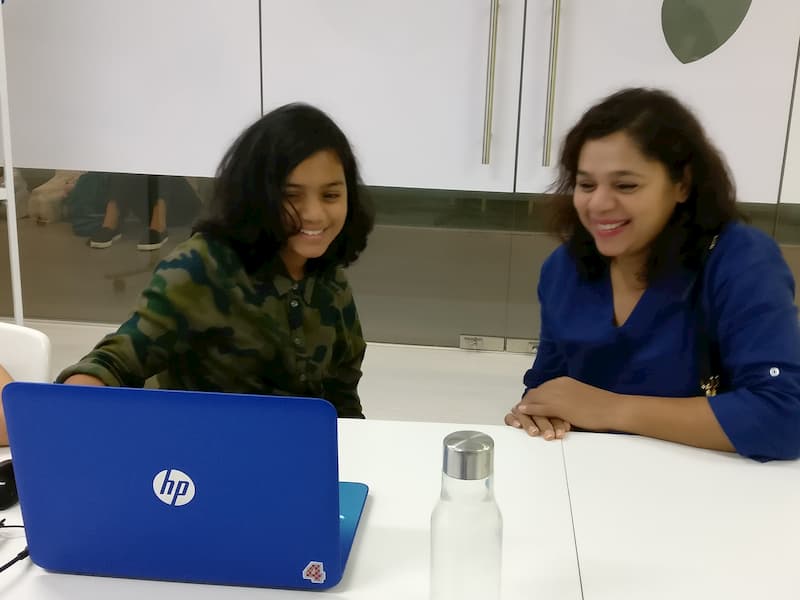Is your child learning to code? If so, good for you! Learning to understand and write programs is probably the most essential life-skill that your child will learn.
However, learning to program can be a challenge for more youthful kids below the ages of 11. Abstract concepts such as conditions, loops and variables are not easily understood and require practice and practical examples before your child will finally get it.
So, how would you help your child to learn to code (even though you may not know how to code yourself?) Here are some tips to get you going:
Here’s how to help your younger kids learn to program
1. Resist the urge to help your child do everything.
Every parent knows this expression.
Yes, this one. Whenever your child want something, and they say, “Pleeeaaseee…. I want. Help me do….”.
As parents, we find it hard to resist. But whenever you step in to help your child, you deprive them of the chance to think about problems and what they can do to solve it.
Instead of clearing every path and obstacle that your child may face, prepare your child to face these obstacles and overcome them! (Further reading here >> https://bit.ly/2HKP2LJ).
2. Spend 30 minutes every week dedicated to a Coding Show-and-Tell session:
After each weekly coding class, spend 30 minutes and sit down with your child and ask them to show their project done during the coding lessons.
During these sessions, let your child start up the computer themselves, open a web browser, log in with their username and password to scratch.mit.edu.
Students should have written down the steps for logging into the scratch website in their Code Book. If your child cannot remember the steps, ask them to take out their books and refer to them. You may want to guide them the first few times, but they should eventually learn to log in themselves!
3. Be interested, observe and ask questions about your child’s projects
Ask your child to load up and showcase the project done. Observe what each sprite (object) is doing, you can ask your child questions such as:
- “What is this project about?”
- “What is this sprite’s name?”
- “What is the ‘job’ of this sprite?”
- “What is this sprite doing/ going to do?”
- “How is this sprite controlled?”
- “What do you click on to start this?”
4. Help them by asking guiding questions
Sometimes, their code doesn’t work as expected, and they may look to you for help. Again, resist the urge to help your child directly! Instead, ask guiding questions to help them.
Instead of saying “ah… look at this block of code, it’s wrong. Remove it.”
Say “ah.. look at this block of code, what does it do? Should it be here? Look at each block step by step. What do you think will happen if we remove it? Let’s try it!”
5. Challenge your child with new project ideas
Coding is actually an outlet for your child’s creativity. You can come up with ideas on new projects together! Here are some examples:
“Someone’s birthday is coming up! Can you code a Birthday Card for that person?”
“It’s going to be National Day soon! Can you code a project for your own fireworks display?”
“The last Avenger’s movie was so cool! Can you code a game with your favourite Avenger in it?”
Help your child learn to code today!
Coding can be a fun bonding session with your child. Kids intuitively love to explore and the open nature of programming tools such as Scratch allows your child to stretch their imagination and code anything they can think of. Follow us at https://www.facebook.com/computhink.com.sg/ for more tips on how you can help your child be an accomplished coder!
Queries/ comments? Please email us at create@computhink.com.sg or Whatsapp us at +65 8858 6173


